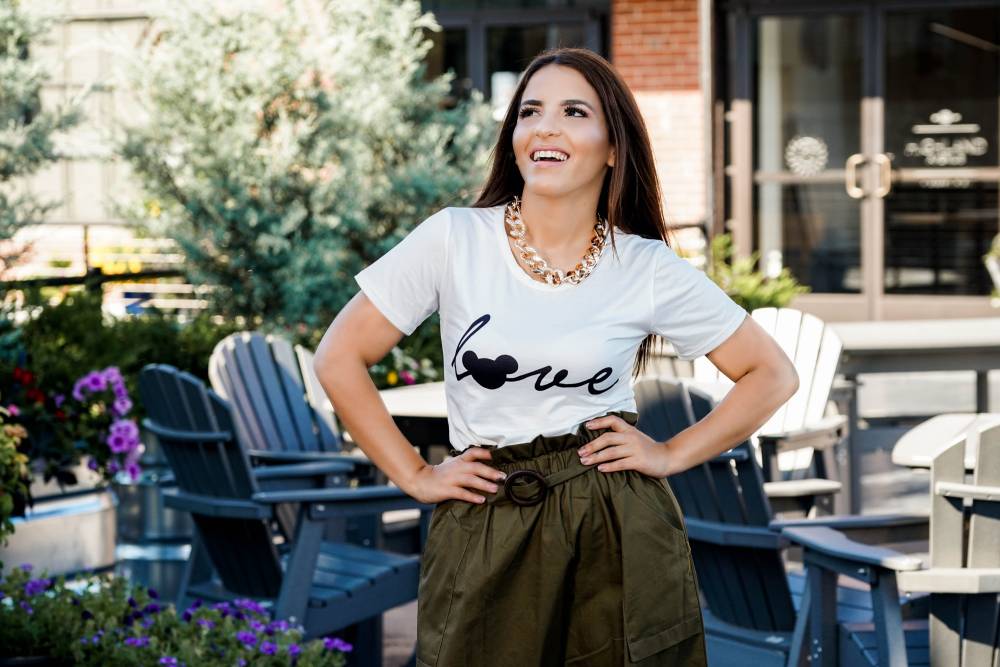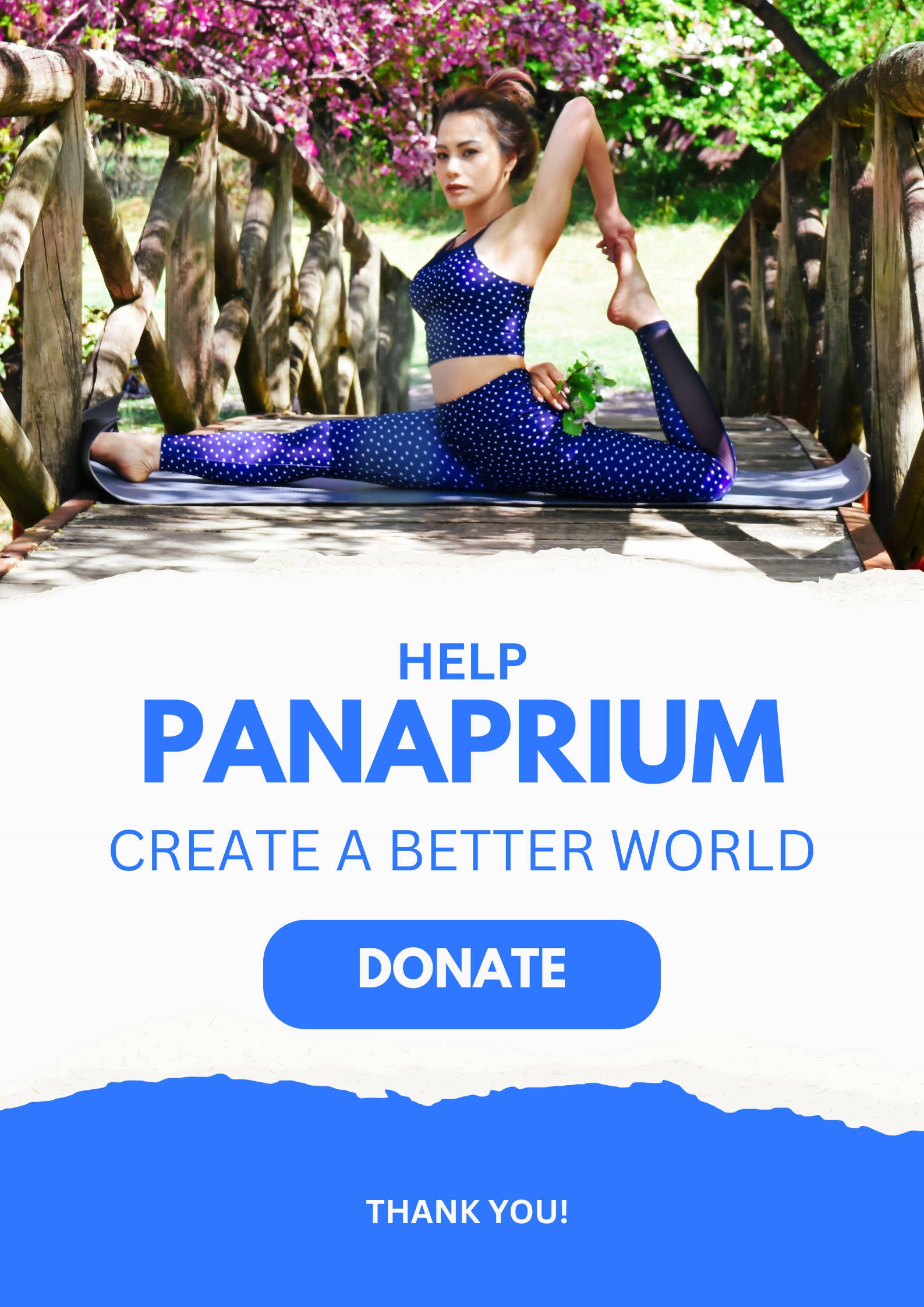
There are plenty of ways to reduce your carbon footprint with fashion. Adopting a more sustainable lifestyle isn't necessarily difficult or expensive. With some simple changes, you can save energy, time, and money while reducing greenhouse gas emissions.
Fortunately, you don't have to make drastic changes to live a more conscious lifestyle. Some clothes are already designed to be eco-friendly. They use new technologies, materials, and business models to save energy and significantly reduce the carbon footprint of your wardrobe.
Sustainability is more important than ever today in the face of climate urgency. The fashion industry has huge negative social and environmental impacts. It's the second-largest polluter of freshwater globally and contributes massively to climate change.
As consumers, we have the power to drive change in the global textile and apparel industry. We can help the planet, people, and animals tremendously by reducing the ecological footprint of our wardrobe and adopting a more sustainable approach to fashion.
The way we produce and consume clothes has a significant impact. Each clothing choice we make support people, organizations, and businesses in the industry.
A lot of consumers today still prefer fast fashion, cheap and trendy clothing pushed to high-street stores every week. It's fun to buy new stylish clothes, especially when they are very affordable. The fast-fashion business model has been in rapid expansion over the past 20 years.
However, fast-moving fashion isn't ethical or sustainable. The overproduction and overconsumption of cheap clothing have catastrophic impacts and accelerates global warming.
Our fashion addiction is extremely damaging not only to the environment but also ecosystems, and human health. We have reached record high textile and plastic wastes, clean water, air, and soil pollution, and greenhouse gas emissions.
It's time to change our behavior and improve the wasteful fashion system into a more inclusive, regenerative, and circular one.
Online shopping is one great example of an easy habit that advances sustainable fashion. It lowers our carbon footprint of clothes as we save traveling to traditional retail stores.
Unfortunately, the digitalization of retail contributes to the fast fashion and throwaway culture where consumers buy more than they need and only wear clothes for a limited amount of time.
It's highly convenient to have new clothes delivered to your door, and then return them for free most of the time. Some even go to the extreme of buying new clothes just to pose in pictures.
Sometimes, less is more. Buying less means caring for clothes more. Repairing and extending the life of clothes reduces your impact on the environment.
Here are some small things you can do to reduce your carbon footprint with fashion.
Panaprium is independent and reader supported. If you buy something through our link, we may earn a commission. If you can, please support us on a monthly basis. It takes less than a minute to set up, and you will be making a big impact every single month. Thank you!
Prefer reusable shopping bags

When out buying new clothes, why not bring reusable shopping bags with you? Pick bags that are strong and durable so you can use them over and over again.
Avoiding new plastic bags reduces the environmental impact of clothes drastically. The major problem of plastic is litter. Most plastic bags end up in landfills to decompose or be incinerated.
They can take up to 1,000 years to decompose. Even worse, some plastic ends up in the wild, in the ocean threatening wildlife. Littered plastic bags are everywhere today. Plastic waste is deceptive for birds and other wildlife, who mistake it for food and die from starvation.
Shop eco-friendly clothing

Prefer environmentally friendly products whenever possible. Every time you buy new clothes look up ecological materials, ethical, and fair production.
Many fashion brands out there conduct business to make the most profit with little care for people, animals, or the environment. They use toxic chemicals in hazardous production processes, mostly in developing countries where labor is extremely cheap and isn't as strictly regulated.
Some apparel brands even use a marketing practice called greenwash. They want to be seen as eco-friendly to appeal to conscious consumers when they are not. They claim to reduce their impact on the environment when "sustainable collections" when the large majority of their business remains highly polluting.
Avoid cheap synthetics

Look for low impact fabrics and eco-friendly materials when buying fashion items. It's one of the best ways to reduce your carbon footprint with fashion.
Cheap synthetic fabrics such as polyester, nylon, and acrylic add up to global plastic pollution. A better solution is to opt for more sustainable alternatives to plastic.
Lyocell and biobased plastics are already a lot better than conventional plastics. They make excellent fabrics for greener clothes that are bio-based, biodegradable, and don't contribute to plastic waste or microfiber pollution.
Use natural materials

Natural plant-based fibers include cotton, linen, hemp, and jute. Their carbon footprints vary but they are biodegradable and don’t contribute to microfiber pollution.
Materials made from natural fibers obtained through organic farming have a low social and environmental impact. However, some of them can consume a lot of water and energy, cotton in particular.
Buy locally-sourced products

Buy locally-sourced fashion products to shrink greenhouse gas emissions from production and transportation. Sustainable fashion supports initiatives in favor of local production and material-sourcing.
Especially in difficult times after the global COVID-19 crisis, creating new opportunities to support the local economy and the wellbeing of local communities is a priority.
Fashion cannot become sustainable without empowering local communities and provide sustainable livelihoods for families. One amazing effort to boost the local economy is the sustainable fashion house Rewanta's initiative in support of local Khadi artisans and weavers.
The coronavirus pandemic has brought most factories to a standstill. Many retail stores closed down and businesses went bankrupt. Thousands of local artisans and weavers are fighting for survival around the world.
It's urgent to provide work to underserved communities to help them and their families survive through the next crisis.
Don't return items bought online

Returned fashion items can double the emissions from transporting the products you bought online. Do you know what happens to clothes when you return them?
A lot of the clothes you return end up in landfills to decompose or be incinerated. Sometimes, they are sold again to new customers. Only a small fraction of clothing returns are recycled or donated to charitable organizations.
It's now faster, easier, and cheaper than ever to buy and return clothes online. Many fashion brands and retailers now offer free shipping and free returns to their customers.
Digitally native apparel and footwear giants such as Zappos, ASOS, and Amazon set the norm for other retailers. Many consumers shopping for clothes on the internet now expect at least fast deliveries and easy returns.
Unfortunately, consumers' clothing returns have a detrimental impact on the environment. It creates large amounts of pollution, carbon emissions, and waste.
Oftentimes, it's a lot cheaper for internet retailers and fashion brands to dump or burn returned goods, rather than trying to sell them again. Greenhouse gas emissions produced in manufacturing become wasted and further emissions are released as textile wastes decompose or burn.
16.9 million tons of used textile wastes are generated each year in the United States, as reported by the United States Environmental Protection Agency (EPA). That number has doubled over the last 20 years.
Recycle and upcycle used clothes

Don't throw old clothes away in the trash. Instead, reuse, repurpose, recycle, and upcycle to keep them out of landfills and incinerators. Garments and other textile wastes are piling up at an alarming rate around the world.
The large majority of old clothes could be recycled. Unfortunately, less than 1% of all textile waste is recycled to make new clothes, as reported by the Ellen MacArthur Foundation.
They hardly get recycled into new clothes because it’s a costly and difficult process. Clothing recycling is still relatively new for many fabrics.
Recycling and upcycling have a positive impact on the environment. You can cut and sew used garments to create new clothes at home without extra machinery.
A wonderful idea is to reduce your carbon footprint and waste is to shred old clothes and other textiles into materials for insulation, carpet padding, yarn, and other uses such as cushion covers, reusable bags, or cleaning rags.
Worn out clothes, especially from natural materials, make the best rags because they are highly absorbent.
You can also participate directly in textile recycling programs or drop off your items at one of the many organizations that are in contact with textile recyclers.
Many towns, cities, and councils, as well as fashion brands and retailers such as H&M or Northface, have programs in place to collect, recycle, and upcycle used clothing. Check out their website to find out if they are collecting old clothes in a store near you.
As consumers, even the small steps we take add up and drive change in the fashion industry. We can all make a difference by being more thoughtful as consumers and encourage companies to become more sustainable.
Shop second-hand clothes

Buy second-hand clothes as it's a tremendous way to reduce your carbon footprint. They are also a wonderful opportunity to create a unique, affordable, and sustainable look.
At your local thrift store, resale shops, pop-up shops, or online, even on Etsy or eBay, you can find amazing used or vintage clothes for a new outfit and save money, resources, and greenhouse gas emissions.
There are many good reasons to buy second-hand clothing. It's a more conscious way of consuming clothes and becoming extremely popular. Thrifting also makes sustainability accessible to more people.
You can also resort to clothing renting and renew your wardrobe this way. By renting, you have access to unique pieces for special occasions. Many fashion rental companies even offer a subscription to customers that want to refresh their clothes more regularly.
Second-hand clothes and pre-loved items not only divert trash away from landfills but also save money. They make a less wasteful way of finding satisfaction in buying new clothes.
“Second-hand clothing is giving clothes a second life, and it’s slowing down that fast-fashion cycle. So I would say second-hand is one of the solutions to the overconsumption challenge.”
- Fee Gilfeather, Head of Audience & Strategic Planning at Oxfam
Donate clothing you don't need

Donate clothes that in good condition to charitable organizations. It's often a lot easier than trying to sell them. It not only helps people in need but also protects the environment by reducing waste and carbon emissions.
There are awesome places to donate clothes you don't want anymore. Some popular organizations to drop clothes off are Goodwill and the Salvation Army.
You can also check out the many places in your area that accept clothing donations. Homeless and women's shelters, family service agencies, immigrant support groups, and churches. Blankets, towels, and linens can go to animal shelters as well.
Or you can organize a clothing swapping event with your friends and family over the weekend. It's a very popular and fun activity to renew your wardrobe without heading to the nearest mall.
Swapping clothes reduce clothing waste and offer access to unique pieces to share with friends, family, and people in your area. You cal also use clothes swapping services that many fashion designers work with to let people wear their clothes for a monthly fee.
Wash your clothes in cold water

You don't need to do your laundry every time with high temperatures. Only wash your clothes when necessary and prefer cold water. The cold water setting on your washing machine saves lots of energy and reduce your carbon footprint.
You don’t need to wash your clothes as often as you might think. If your clothes don't smell or aren't stained, consider wearing them again instead of washing them. Read up my guide on how often you should change your clothes to learn more about when to wash and buy new clothes.
When doing your laundry, you want to use full loads as they are the most energy and water-efficient choice. And dry clothes, sheets, towels, and other cloth goods by hanging them on a clothesline whenever possible.
You will save money, water, and electricity, hence reduce your water and carbon footprint. Your clothes also last longer when you don’t wash them as often and lower the heat they receive from the washing machine and dryer.
Furthermore, how often you do your laundry affects the number of plastic microfibers that go into the water system. Washing most clothes, especially those made of cheap synthetic materials, releases plastic microfibers into waterways that threaten marine life and human health.
Buy only what you need

We are all tempted by fast fashion shops. They are cheap and convenient but it a terrible habit to buy when you don’t need to. You’ll end up having too many clothes and still nothing to wear.
Fast fashion encourages us to buy more clothes, more often. Buying new clothes on an impulse seems so harmless but it's very disastrous on a large scale.
Fast fashion has gained massive popularity over the last 20 years. In a consumerist society, people are trained to find fast fashion pleasurable and addictive. But our fast fashion addiction kills too many people and animals globally.
To lower your carbon footprint with fashion and contribute to a greener environment for farmers, garment workers, and ourselves, buy only what you need.
Refrain from partaking in instant gratification. The cost of every piece of clothing is a lot more than just what’s written on its price tag. Try to appreciate what you already have and quit fast fashion for good.
Buy fewer clothes

The most sustainable clothing piece is the one we already own. The best way to reduce your carbon footprint is to buy fewer clothes.
We should all rethink our excessive consumerism if we want to save the planet, animals, and human lives. It's time to start thinking about the consequences behind each of our purchasing decisions.
Why not try out a capsule wardrobe? Learn how to build a sustainable and minimalist wardrobe. Follow the example of Lia, Youtuber from Switzerland living in Germany.
With a few simple tips, you can put more simplicity into your fashion style to save money, live a more fulfilled life, and protect the environment at the same time.
It's a lot easier to get dressed in the morning with less stuff in our closet. Focus on the essentials, on what you need, and invest in more classic, timeless pieces, instead of cheap and disposable high-street clothes.
Overconsumption is the main reason so much clothing goes to waste today. We buy and produce way more than we need and end up with more waste than necessary.
Simple fashion aesthetics are good for the eye and the environment. Try to cultivate the habit of living well with less. It will not only improve your fashion sense but also serve other areas of your life as well.
Choose quality over quantity

One of the best ways to reduce your carbon footprint with fashion is to shop for more durable and high-quality clothing that lasts longer. Make sure to wear your clothes for a long time.
You can check the fabric quality of garments before buying them to determine if they are worth it. With better construction and material quality, clothes tend to last longer.
High-quality clothes decrease pollution, waste, carbon emissions, and save resources. Start to care more about the quality of the clothes you buy instead of how many you could have.
In the long run, it's more desirable for your budget and the planet. Well-made clothes can last decades and hold their shape. See what vintage shops are selling. Some pieces are very old and still look good.
Clothes of poorer quality not only wear out fast but also aren't very flattering. Vote with your money and drive companies to manufacture and sell better fashion items. Also, support ethical fashion brands that care about sustainability.
Buy certified products

A great way to tell if clothes are high-quality is to look for certifications. Certified materials are generally better for the environment. Also, some of them guarantee good working conditions in every step of the supply chain.
Certifications are important because they prove that clothing has been produced in sustainable processes under environmentally friendly and socially responsible working conditions.
Especially when it comes to organic farming, a certification standard for independent third-party organizations confirms the cotton fibers' quality and eco-friendliness.
Organic cotton, Fair Trade organic cotton, and CmiA organic cotton account for about 3.3% of the total preferred cotton production that also includes the Better Cotton Initiative (BCI), REEL cotton, and Cleaner cotton.
Organic cotton must be grown and certified to a standard approved by the International Federation of Organic Agriculture Movements (IFOAM).
There are currently two independent organic certifications for organic cotton:
Some other organizations issuing organic certifications are:
About 80% of all organic cotton is grown with water form rainfalls without additional irrigation, which reduces pressure on local water sources.
And the Textile Exchange estimates that organic cotton farming can potentially save 218 billion liters of water and 92.5 million kg of carbon dioxide.
Choose cruelty-free fashion

The global textile and apparel industry kills billions of animals every year. It's cruel toward animals and endangers ecosystems. Animal products and by-products are very common in the fashion world.
To protect the planet, people, and animals, we should quit buying fashion that came from an animal. You can tell if a fashion brand is cruelty-free by looking at the labels. An ethical fashion brand doesn't use any animal products or by-products to make fashion.
Most consumers don't realize the damage they are causing by buying and wearing sweaters, coats, jackets, shoes, bags, or belts made from wool, leather, fur, down, or silk.
Contrary to popular belief, animal-based materials aren't environmentally friendly. They have a disastrous impact on the environment. Their farming and processing pollute the air, soil, water, and produce tons of greenhouse gases and wastes.
As an example, wool creates methane as a by-product of sheep farming. One sheep can produce about 30 liters of methane each day. And of all the greenhouse gases, methane is one of the most potent because of its ability to efficiently absorb heat in Earth's atmosphere.
According to the United States Environmental Protection Agency (EPA), one kilogram of methane warms the planet as much as 80 times more than one kilogram of carbon dioxide over 20 years.
The Higg Materials Sustainability Index (MSI) attributes wool a Global Warming Score of 40.0, which is more than four times worse than 8.8 for cotton.
Take care of what you have

Reduce your carbon footprint in the long run by taking care of what's already in your closet. Love the clothes you have to make sure you won't have to be on the lookout for new clothing all the time.
To easily lower your carbon footprint, you can simply extend the lifespan of your clothes. Learn how to cut and sew at home to repair missing buttons, zippers that snag, broken buckles, tears, and holes.
It's one of the most simple steps and highly beneficial to the environment. Repair and reuse your clothes instead of buying new ones to a possible extent as much as you can.
Taking better care of clothes makes an enormous difference. Giving them a new life has a huge positive impact on the environment.
Consumers in our modern society don't keep clothes for long. The rise of fast fashion over the last 20 years made us consider clothing as a disposable commodity.
Barnardo's, an organization supporting children in need of help and offering clothes, found in their 2015 survey of about 2,000 women in the United Kingdom that respondents on average wore an item seven times.
Under normal wear and tear, the average life expectancy of clothing would be more than 2 years.
The number of times the average piece of clothing is worn is nearly 120 times globally. That number has been shrinking a lot over the last 15 years, by 36 percent between 2000 and 2015. In the same period, clothing production doubled.
In the United States, clothes are only worn for around a quarter of the global average, as reported by the Ellen MacArthur Foundation based on the data of Euromonitor International.
To reduce the carbon footprint of your clothes, invest in higher-quality items, wear them more often, take good care of them, and hold onto them for longer.
Was this article helpful to you? Please tell us what you liked or didn't like in the comments below.
About the Author: Alex Assoune
What We're Up Against
Multinational corporations overproducing cheap products in the poorest countries.
Huge factories with sweatshop-like conditions underpaying workers.
Media conglomerates promoting unethical, unsustainable products.
Bad actors encouraging overconsumption through oblivious behavior.
- - - -
Thankfully, we've got our supporters, including you.
Panaprium is funded by readers like you who want to join us in our mission to make the world entirely sustainable.
If you can, please support us on a monthly basis. It takes less than a minute to set up, and you will be making a big impact every single month. Thank you.
































0 comments